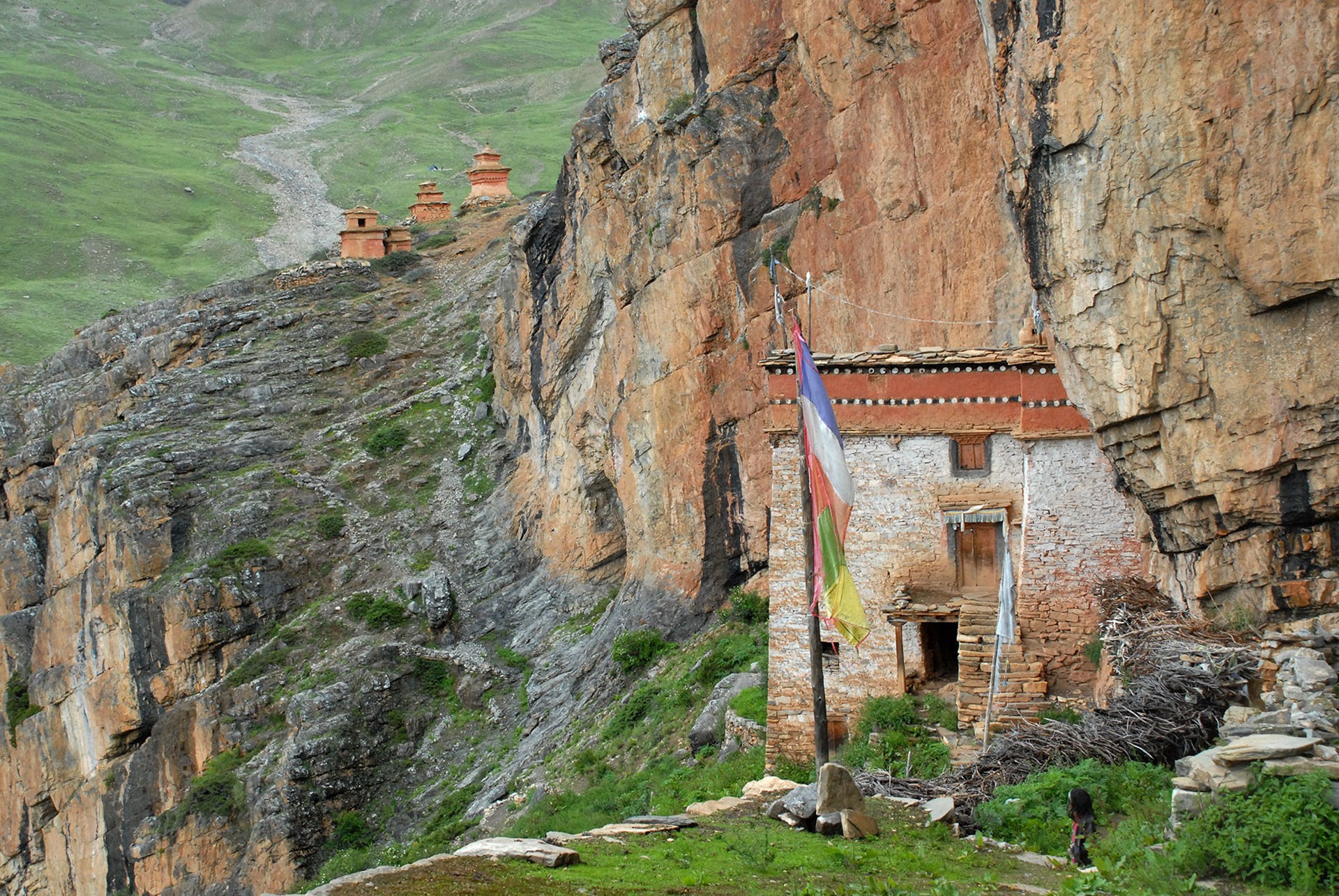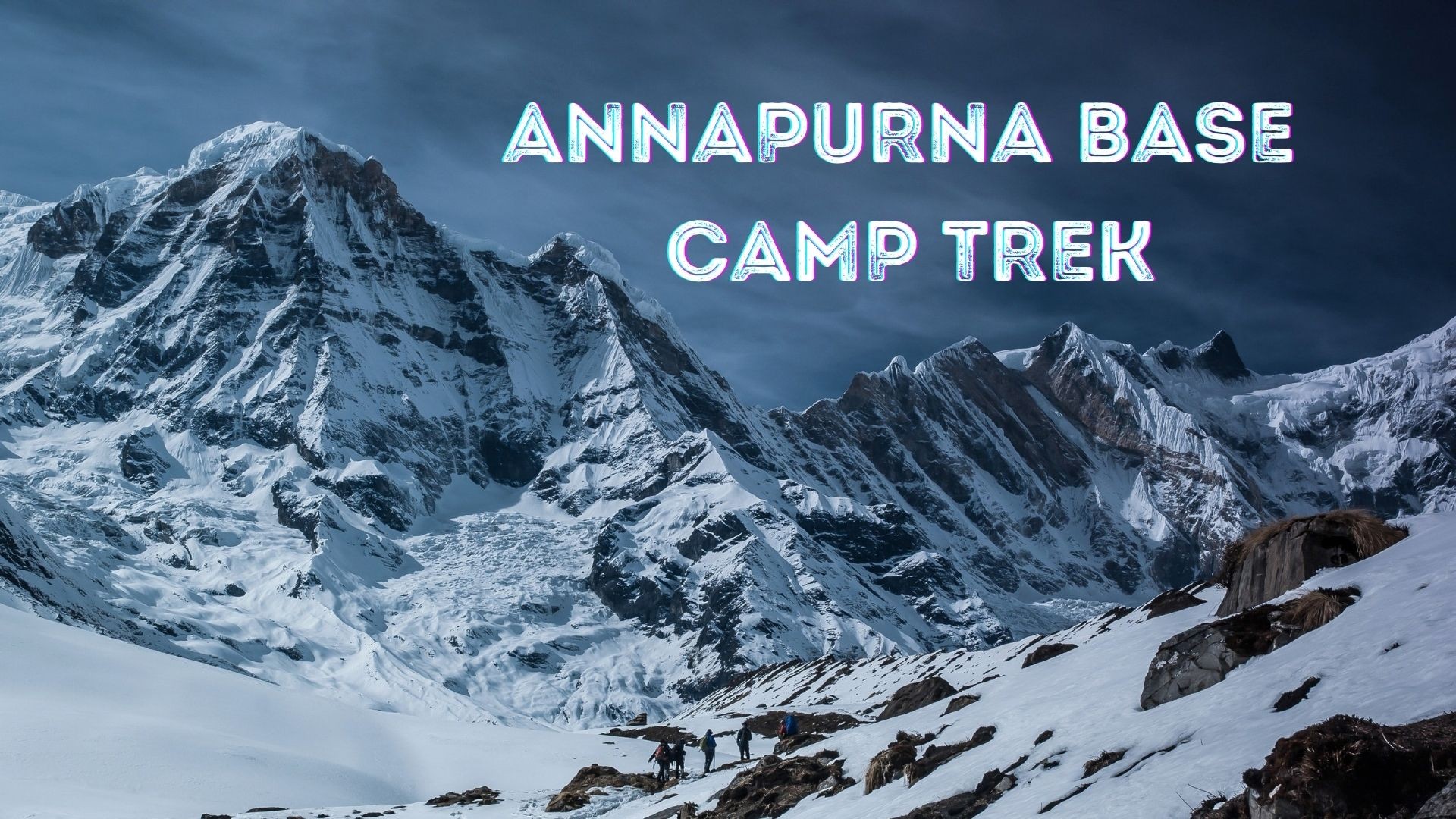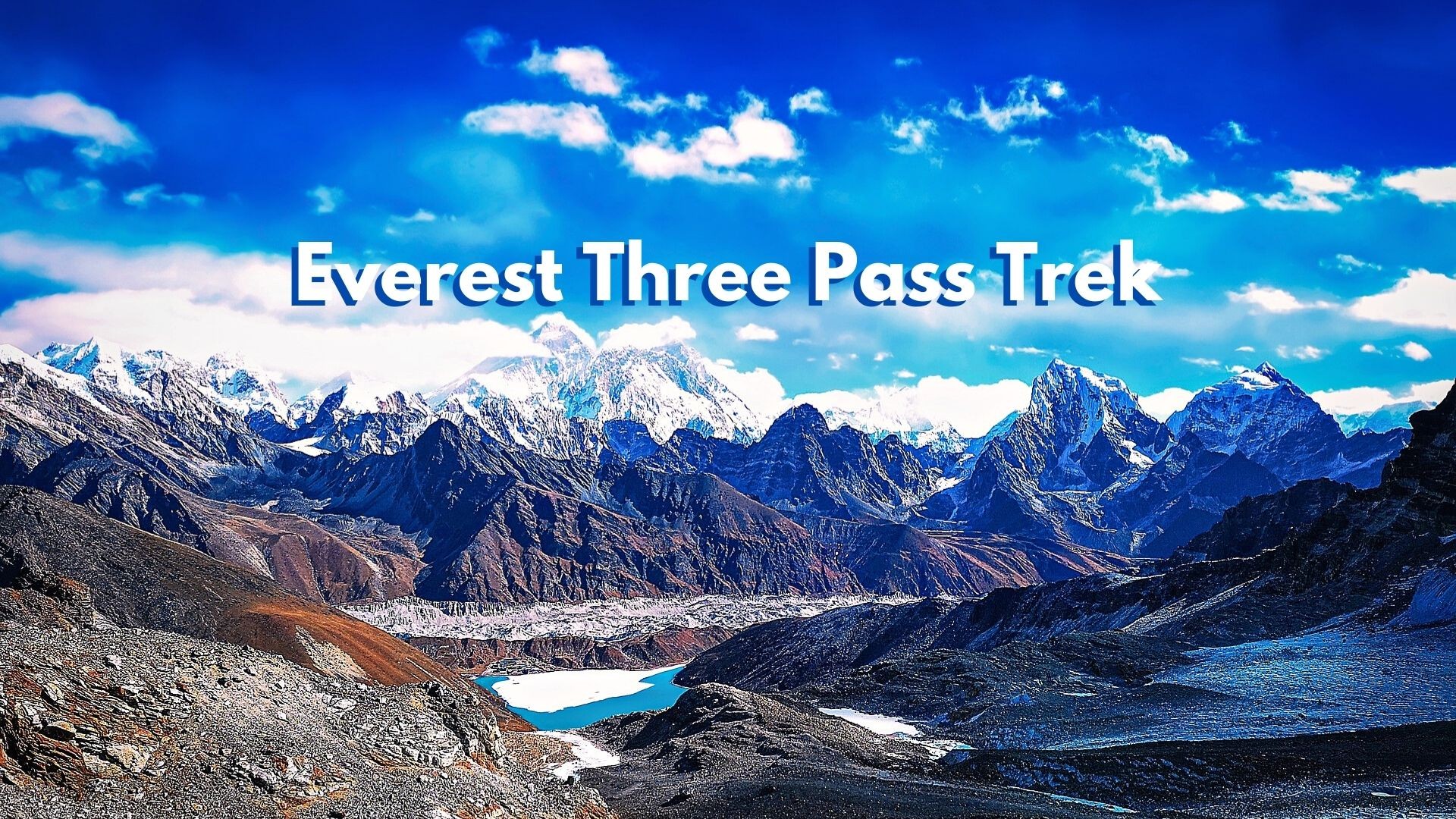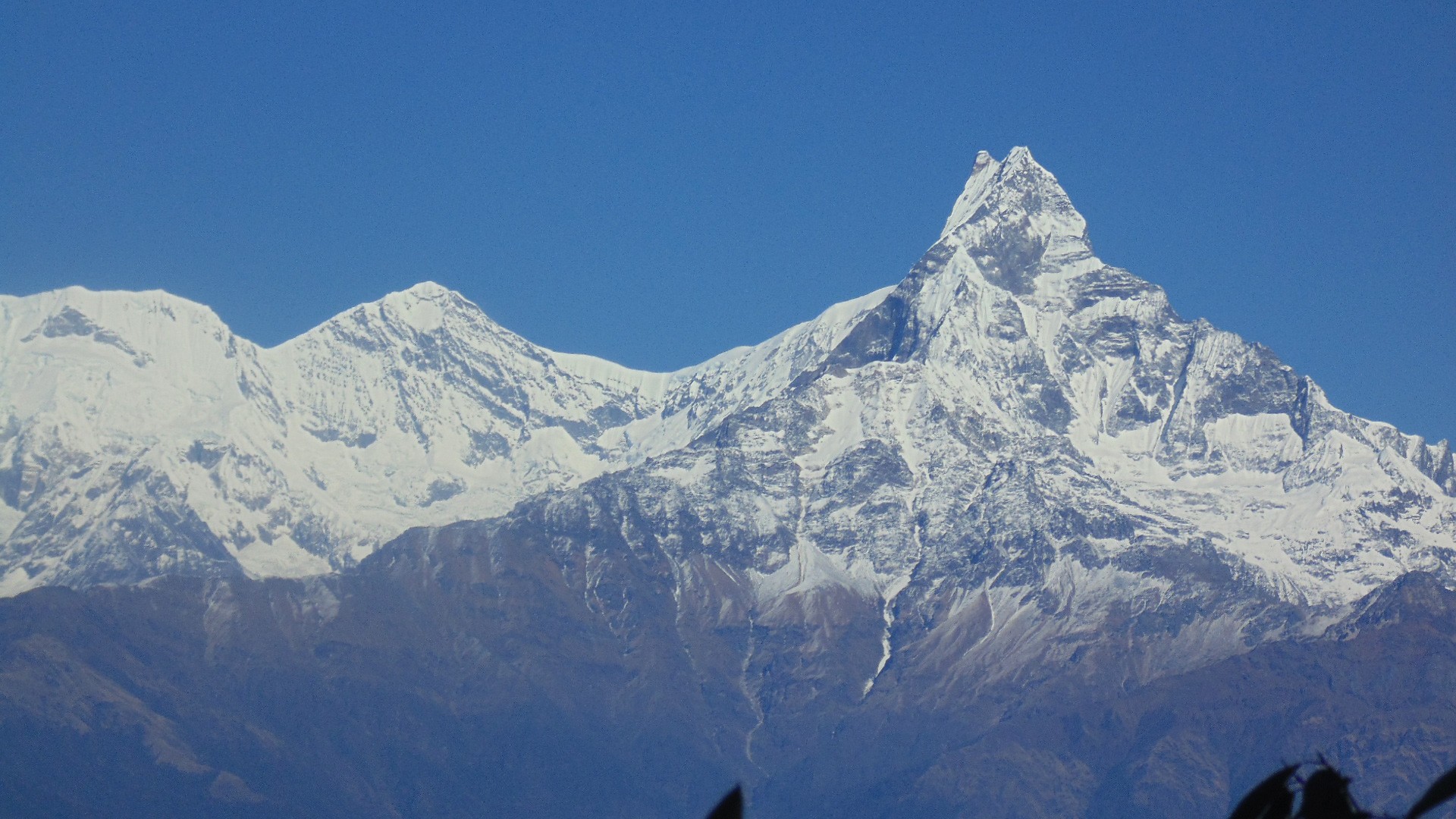Annapurna Base Camp+Thorung Pass (5416m) Trek 22N/23D
A COMPLETE TREK OF ROUND ANNAPURNAS (5416M)
This is a great complete tour of Annapurna massifs including Annapurna Base Camp popularly known as Annapurna Sanctuary. From lowland villages along the Marsyangdi river to the Tibet-like country on the northern slopes this trek follows well established trails around the entire Annapurna massif. From Manang to Muktinath through the Thorang La(5416m) is a long trek at high elevation and requires an excellent physical condition. The Thorang La is usually snowbound and closed from mid-December to Marche. Then you will trek along the Kali Gandaki valley between the Dhaulagiri and Annapurna ranges and climb out of it to Ghorepani then we trek towards Annapurna Sanctuary.
Highlights of this tour:
- Thorung La Pass (5416M)
- Annapurna Base Camp (4200M)
- Gurung Villages Manang, Ghandruk, Landruk, Mustang
- Rhododendron forest, Bamboo Forest, Oak Forest
- Breathtaking view of Himalayan Range (Dhaulagiri (8172m), Annapurna I (8091m), Annapurna II (7937m), Annapurna III (7555m), Annapurna IV (7525m), Gangapurna (7454m), Annapurna South (7219m), Hiunchuli (6434m), Nilgiri (6940m), Machhapuchhre (6993m)
Bhaktapur Darbar (palace) Square
Bhaktapur, city of devotees. During the Licchavi period in about 3rd century, it used to be a prosperous village known by the name of Khowpring or Khowpo or even as Badagaun in Newari Language. The city was originally designed like a conch shell in the 12th century by King Ananda Dev. There were 99 courtyards out of which only 6 remains. It lies 13 km east of the Kathmandu and 1400 meters above sea level. Lifestyle in Bhaktapur is different than that of Kathmandu with unusual cultural and religious heritage sites. It is known as the cultural capital of Nepal and enlisted in the UNESCO WORLD HERITAGE SITE since 1979. Master piece of 17th century Medieval art and architectures are well preserved and renovated exactly as they were before.
Highlights
- Siddhapokhari: (Holy pond constructed by King Yakshya Mall in the 15th century)
- Pottery Square: Experience traditional way of making household utencils with black clay specially found in Bhaktapur using spinning wooden wheels. We can observe the process of making clay pots in different forms and drying in the pottery square each day.
- Taumadi Square: (18th century Nyatapola Temple or 5 storey temple is one of the tallest temple in the country which was safe during the great earthquakes in the past. Goddess Siddhi Laxmi is the main diety enshrined in this temple. Kashi Bairav 15 th century along with Betal pati an sattal)
- Durbar Square: (Golden Gate, Statue of Bhupatindra Mall, National Art Gallery, Master piece Stone Statue of Ugrachandi, Bairav, Narasingha, Hanumanta Bairav), 55 windows palace, Vatsala Temple, Krishna Temple, Chyasingh Mandap, Taleju Temple, Water spout, Yakshyashwor Temple etc.. most of them were constructed during 17th century.
- Dattatreya Square: It is a open meseum for wood carving.
- Bhimsen Temple: The god of power worshipped by the bussiness community was constructed in 1427 AD by King Yakshya Malla. Renovated by king Bishow Malla in 1458 AD as well as UNESCO and German colabration in early 70s.
- Dattatreya Temple: Pagoda style (Temple of Trinities) Bramha ( the creator) Bishnu (the Protector) and Shiva (the destroyer). Datta means to give and treya means three. Combination of Datta, Som, and Durbasa. This temple is also said to be constructed by a single tree like Kasthamandap in Kathmandu.
- Pujari Math: 1458 AD by King Bishwa Malla. It was a very powerful hindu monastry. It could even punish kings.
During the leisure time, the farmers produces household products like clay potteries, straw mattress, cloths like hakupatasi and Black hat (Bhadgaule Topi), and famous king curd (juju dhau).
Bouddhanath Stupa
Appoxmately 6-7 km north east from center of Kathmandu, Boudhanath Stupa is commonly known as Boudha or Boudhanath (Lord of Wisdom). This is the largest stupa in the world with 120 ft in diameter, 1 hector in width, and 43.25 m in height with area of approxmately 6,756 sq meters. Many people believe that Bouddhanath was constructed in the 4th century by king Mandeva right after the death of Buddha. The stupa is said to entomb the remains (Astidhatu) of a Kashyapa Buddha. It is believed that Jyajima requested a Valley king for the donation of ground required to build a stupa. She was told to get as much place as she could cover with the buffalo skin. She was so clever that she cut a buffalo skin into thin strips. The king had no choice but to give her the land. It is said that Jyajima worked for four years and died then it took almost three years to complete the construction after her death,which was completed by one of her son. Now we do have around 50 monsatries around boudhanath area.
We can buy colorful thangkas, Tibetan jewellery, hand-woven carpets, masks, and khukuri (knives) in Boudha. Smaller stupas are located at the base. Gompa monasteries, curio shops, and restaurants surround Bouddhanath. Restaurants with roof-top provide good food and excellent views of Bouddhanath. After 1959 Chinese invasion in Tibet ten thousand of Tibetans settled down here since then the temple has become one of the most important centers of Tibetan Buddhism. Today it remains an important place of pilgrimage and meditation for Tibetan Buddhists and local Nepalis, as well as a popular tourist destination. Losar (Tibetan New Year) and BuddhaJayanti are major festival celeberated in Boudhanath.
Pashupatinath Temple
Pashupatinath is a famous, sacred Hindu temple dedicated to Lord Shiva and is located on the banks of the Bagmati River 5 kilometres east of Kathmandu Valley. This temple is considered one of the sacred temples of Hindu faith .This holy place is listed in UNESCO World Heritage Sites’s since 1979 AD. It was said to be in existance since 400 B.C. constructed by Lichchhavi king Supuspa Deva mentioned in stone inscription erected by Jayadeva 11 in the courtyard of Pashupatinath in 753 AD and being renovated by and modified by different kings. The head priest are Bhattas (Vedic Dravida Brahmin Scholars) appointed by Adi Guru Shankaracharya. Bhandari are the treasurers, temple caretakers, and assistant priest of the temple but are not allowed to touch the God. A lot of devotees visit Pashupatinath on Monday since it is called the day of worshipping Shiva but people worship Pashupatinath everyday. We can see a lot of monkeys in the premises and deers on the deer park. The most important festival is the Maha Shiva Ratri on the month of February, Bala chaturthi, and Teej. The major hightlights of Pashupatinath is cremations on the bank of Bagmati River seen everyday, Deer park (where Lord Shiva used to be an antelope), Ram Mandir, evening Ganga arati, Ananta Narayan, Kali, Dome style Laxmi Narayan Temple, residene of holy Hindu monks popularly known as Sadhus, School of vedic rituals and so on.
DETAIL ITINERARY:
Day 01: Arrival At Tribhuvan International Airport (TIA) Kathmandu (1350m) +−Our guide will be waiting with our office name board "KOSELI ADVENTURE PVT.LTD" at TIA, welcome you with the garland of flowers and transfer to Hotel. According to your arrival time, our guide take you to visit Kathmandu Old Bazaars "Ason and Indrachowk" where nepalis people buy everything they need for their daily life. You will also see several Pagoda Temples within this visit. Then take you to Kathmandu First Touristic place "Thamel" by rickshwas (three wheels cycle) where you can buy your trekking necessities and also exchange money or taste a organic Himalayan coffee. Back to Hotel.
Transfer : 35 mins
Visiting Time : 2 hours
Dinner : at Utsav (well known for delicious food with Nepali Cultural Dance Show)
O/N : Kathmandu Guest House (First hotel in the heart of Thamel)
Early in the morning, we drive on private minibus to Beshishahar (760m) through beautiful landscape,rice fields, villages, rivers and bazaars. After Besishahar, on 4/4 jeep, we drive to Dharapani through beautiful Gurung village Khudi, rice fields, waterfall, Jagat, Chyamche along the Marsyangdi River.
Transfer : 6 hours to Beshishahar, 3h30mins to Dharapani.
Lunch : Beshishahar
Dinner and O/N : Lodge at Dharapani.
We start from the big gurung villages Dharapani, junction between the Manaslu and Annapurna to climb up to Upper Timang through pin forest and beautiful view of Lumjung Himal (6993m). Here we take lunch. We continue to Chame though pin forest and beautiful view of Massif Manaslu. Chame is the district headquarter of Manang, so we can see many shops, lodges, government offices, stones written "OM MANE PADME HOM", sacred prayer wheels.
Walking Time : 5 hours
Lunch : Upper Timang
Dinner and O/N : Chame
We cross the river by iron bridge and start climb up through beautiful pin forest, potatoes fields, beautiful view of Manaslu and Annapurna II (7937m), Bhratang to Dhikur Pokhari (Lake). Here we take lunch just under the Annapurna II (7937m). We continue through small lake and climb up to Upper Pisang Village.
Walking Time : 5 hours
Lunch : Dhikur Pokhari
Dinner and O/N : Upper Pisang Lodge
We start climb up to an old tibetan village Ghyaru (3700m) on the foot of Annapurna II (7937m) which offer us an excellent view of landscape and Himalayan view of north. We progressively arrive at Ngawal, less visited village, from where we admire one of the best views of this trekking of Annapuran II (7937m), Annpurna III (7555m), Annapurna IV (7525m), Gangapurna (7454m), and Tilicho Peak (7134m). We also see big vulture flying over the villages most of the time.
Walking Time : 4 hours
Lunch : Ghyaru or Nawal
Dinner and O/N : Nawal lodge.
We descend to Mugje from Ngawal with the always breathtaking view of the Massif Annapurna Ranges, Gangapurna and Tilicho Peak. Then we take a way to Manang through a very beautiful Tibetan village, Bragra where we can visit 500 years old monastery. We take lunch and then continue about one hour walk to Manang. Afternoon, free time or visit around the village.
Walking Time : 3h30mins
Lunch : Braga
Dinner and O/N : Manang Lodge
We are already in high altitude, so we walk slowly and continuously climb up to Yak Kharka with amazing view of Tilicho Peak (7134m), Gangapurna (7454m), Annapurna Ranges. On the way to Yak Kharka, we can see yaks, bharals (blue sheeps). Here we take lunch. Then we progressively climb up to Ledar. In the afternoon we can climb up to slope of Chulu West to admire magnificent view of Gangapurna and Khangsar Kang (7485m) also called Roc Noir.
Walking Time : 5 hours
Lunch : Yak Kharka
Dinner and O/N : Ledar Lodge
We climb up keeping our rhythm of walking to descend till small bridge to climb up about 30mins to the top. Then through some ups and downs and stone falling places we reach Thorung La Phedi. Here we meet so many trekkers, guides, porters. We take lunch here to climb up at an altitude of 4925m in about 1 hour climb. Some of trekkers choose Thorung La Phedi for overnight but we choose High Camp to avoid 1 hour steep climbing in the early morning to cross Thorung La (5416m). We climb early in the morning to avoid wind in the pass.
Walking Time : 4h30m
Lunch : Thorung La Phedi
Dinner and O/N : High Camp
We start after drinking hot cup of coffee or tea early in the morning to climb slowly and surely the Thorung La Top before 9 o'clock in the morning to avoid the violent wend and for an exceptional view of Himalayan Ranges including Annapurnas, Chulu, Dhaulagiri and the deserter view of Dolpo and Mustang. We take several photos for our lifetime memories and start walk steep down to the Muktinath, a very famous temple for Hindus as well as Bouddhists. This is the temple where 108 water tap of glacier are made to purify one's body and soul to pray homage for the Hingu God Of Protector Lord Bishnu. Thousands of Indian and Nepali as well as Buddhist visit this holy temple throughout the year to pay homage to Lord Bishnu. One of the holy pilgrimage place for Hindu and Buddhiste. Then we descend about 30 mins to reach Ranipauwa for the overnight stay.
Walking Time : 8/9 hours
Lunch : Pack Lunch on the way down to Muktinath
Dinner and O/N : Ranipauwa lodge
For an extraordinary view of Nilgiri North (7061m), Dhaulagiri (8167m) and Tukuche Peak (6920m), we climb up to Dangla pass then descend to Lupra village where we can visit Bon Monastery. Then we trek down to Ekle Bhatti where we take lunch. After lunch, we walk along the Kali Gandaki river on our right hand side to Jomsom. Jomsom is the district headquarter of Mustang district, where there are many lodge and hotels, airport, government offices, police post, bakery and tea houses and restaurants. This is the only one entry point to trek to Upper Mustang.
Walking Time : 5h30
Lunch : Ekle Bhatti
Dinner and O/N : Jomsom Hotel
We used to trek on this route till 7/8 years ago, but nowadays we take 4/4 jeep to Tatopani. Before we used to walk two days to reach Tatopani but nowadays, it takes us on jeep 5/6 hours. So we take 4/4 jeep to Tatopani. Tatopani means hot spring water in Nepali. On our several stops to Tatopani, we can see Marpha and Tukuche villages of Famous Thakali Ethnic of Nepal as well as Kalopani deepest gorge of the world between Dhaulagiri and Annapurna 8000m plus. With the view of some villages, lush green landscape, waterfall, vegetation of sugarcane, papaya, agricultural fields finally we arrive a big village of Tatopani.
Transfer : 5/6 hours
Lunch : Kalopani
Dinner and O/N : Tatopani Lodge.
We start crossing a long iron bridge of Kali Gandaki River to climb up to Gorepani through traditional Nepali houses, villages like Ghara, Shikha Phalante and Chitre, agricultural fields, their daily life activities, beautiful views of landscape, breathtaking Himal Nilgiri South (6839m), Bharha Chuli (Fang) (7647m), Annapurna South (7219m), Dhaulagiri (8172m) and Tukuche (6920m).
We climb up after lunch, 1 last hour steep walk to the big village of Gorepani through magnificent rhododendrons forest.
Walking Time : 7 hours
Lunch : Shikha or Phalante
Dinner and O/N : Gorepani Lodge
Early in the morning at 5:00am, we climb up steep to Poon Hill for the morning sunrise views with the breathtaking panoramic 360 degree views of Dhaulagiri Ranges, Tukuche, Bharha Culi (feng) (7647m), Ganggapurna (7454m), Annapurana Ranges (I,II,III,IV), Hiunchuli (6434m), Machhapuchhre (6993m), Gandharwa Chuli (6248m), Nilgiri south (6839m), Glacier Dome (7069m), Khangsar Kang (Roc Noir 7485m), Singu Chuli (6501m). Lamjung Himal (6983m). Back to Gorepani lodge, take breakfast then we start trek to Tadapani. We climb up steep to Deurali Pass always the stunning views of Himalayan Range are fantastic. We pass through beautiful giant rhododendron forest which are so colourful in the month of April, May to Ban Thanti. We stop for the lunch here. Then we trek down steep till a small cement bridge to climb up steep to Tadapani through beautiful forest.
Walking Time : 5h30
Lunch : BanThanti
Dinner : Tadapani Lodge
We take breakfast with the magnificent view of Annapurna South (7219m), Hiunchuli (6434m) and Machhapuchhre (Fishtail 6993m) at Lodge. We start trek down to Gurjung Village for lunch through one of the beautiful rhododendrons forest where shelter national bird Danphe, Black bear, Red pandas, Musk Deer, Langur Monkeys. We cross the long iron bridge de Kimrong River then progressively we climb up to beautiful Gurung Village Gurjung. After lunch, we walk through ups and downs with always beautiful landscape, villages, agricultural fields to the entry point of Annapurna Base Camp at Chhomrong. Chhomrong is one of the big village Gurung of the region. There are many lodges and always the fascinating views of Annapurna south, Machhapuchhre
on the top. But we continue to descend through more than 2000 stone paved ladder till an iron bridge of Chhomrung River to climb up to Sinuwa another small gurung village from here the fishtail (Machhapuchhre 6993m) is more closer than before.
Walking Time : 6 hours
Lunch : Gurjung
Dinner and O/N : Sinuwa Lodge
We trek through the shadow of the mixed forest of rhododendrons, bamboos, oak trees, foggier, bougainvillea where if lucky can see pandas. We walk steep down through the stone paved ladder to Bamboo where there are 3/4 lodges and bamboo forest. We continue through bamboo forest to climb up progressively to Dovan for Lunch. After lunch, we continue to climb up with little ups and downs through Himalayan where there are 2 lodges finally, after some 1 hour ups and downs walk through forest we reach to Deurali.
Waling Time : 5 hours
Lunch : Dovan
Dinner and O/N : Deurali
Today, we walk only about 2 hours to reach to MBC with the beautiful view of Annapurna III (7555m), Gangapurna (7454m) and Machhapuchhre (6993m) ( in front of us) for acclimatization. After lunch at MBC, we walk up and come back to lodge for acclimatization, during our acclimatization, this is not rare to see the herds of Himalayan Goat "Thars".
Walking Time : 2h30
Lunch/Dinner and O/N : At MBC
Today is the day to admire Annapurna Sanctuary so we start our trek at 4:30 am to reach on ABC at the time of sunrise. An excellent 360 degree panoramic view of Annapurna I (8091m), Annapurna South (7219m), Gangapurna (7454m), Hiunchuli (6434m) and Fishtail (6993m) with morning sun-rays are no doubt exceptional view of this planet. After admiring and taking lots of photos for our unforgettable memories, we trek down to MBC for breakfast. We trek long same way down to Dobhan. Walking Time : 6 hours Lunch : Himalaya Dinner and O/N : Dobhan
We trek the same way down to Bamboo then climb up to Sinuwa through the same beautiful mixed forests in the shadow. We take lunch, then we descend till iron bridge of Chhomrong River to climb up more than 2000 stone paved ladder to the top of the Chhomrong village.
Walking Time : 5 hours
Lunch : Sinuwa
Dinner and O/N : Chhomrong
We trek down to the Kimrong River then we climb up to most beautiful Gurung Village of this region Ghandruk through agricultural fields, landscape, forest. We take lunch on our arrival. Afternoon, we visit Ghandruk village, monastery, cultural museum with always smiling local people and fascinating Annapurna South (7219m), Hiunchuli (6434m) and of course Fishtail (Machhapuchhre 6993m), the queen of the Himalaya.
Walking Time : 4 hours
Lunch/Dinner/O/N : Ghandruk lodge.
We start trek down till an iron bridge through forest then climb up through agricultural fields to Landruk another beautiful Gurung Village. We have always smiling view of Annapuran South, Hiunchuli and Machhapuchhre (Fishtail). We continue with the flat way to Tolka for the lunch then we climb up steep to Pittam Deurali for tea break. Then continue to Pothana village.
Through the rhododendrons forest we walk to Australian Camp from here we can admire Pokhara Valley, Phewa lake as well as Annapurna South, Hiunchuli and Machhapuchhre. Then we trek down about 1 hour through villages, agricultural fields, their domestic animlas like goat, cow, buffalo, etc to reach Kande. From Here we drive to Pokhara Phewa Lake Side for lunch then drive to Pokhara Airport for take a flight to Kathmadu. From Kathmandu Airport transfer to hotel.
Walking Hours : 2h30
Transfer total : 1h45mins
Flight : 25 mins
Lunch : Pokhara Phewa Lake Side, At Banjan Restaurant
Dinner and O/N : Kathmandu Hotel.
We visit Bhaktapur Darbar (Palace) Square, Pashupatinath Temple and Bouddhanath Stupa. All of these are the UNESCO WORLD CULTURAL HERITAGE SITE ENLISTED IN 1979.
Transfer : 2h45mins
Visiting Time : 5 hours
Lunch : Bouddha
Dinner : At Utsav Restaurant (a well known restaurant for delicious food and Nepali Cultural Dance Show)
Free time according to your international flight schedule and transfer to Tribhuvan International Airport (TIA).
Transfer : 35 mins
PACKAGE INCLUDES:
- 2 nights in 3 star hotel in Kathmandu.
- All the transportation mentioned in the program.
- An experienced English Speaking Guide.
- 1 porter for 2 persons.
- Best accomodation available during the trek.
- Breakfast, lunch and dinner during the trek.
- Entrance fees.
- Annapurna conservation area permit (ACAP) and TIMS Card.
PACKAGE EXCLUDES:
- International Flight
- Visa fees.
- Trekking materials.
- Personal expenses on bar bills all kind of beverages except tea or coffee.
- Battery charging fee and hot shower fee during trek.
- Compulsory Insurance.
- Tips for Guide and porters. (Tips are accepted but not mendotary)
- Expenses of natural disaster, accident, evacuation fee in case of emergency.








